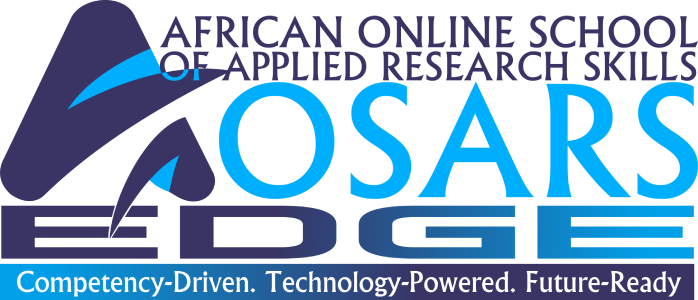RESEARCH INSTRUMENTATION IN THE AGE OF AI: BALANCING ETHICS, STRUCTURE, AND TECHNOLOGY

RESEARCH INSTRUMENTATION IN THE AGE OF AI: BALANCING ETHICS, STRUCTURE, AND TECHNOLOGY
A practical session on instrumentation and questionnaire development was conducted on September 20, 2025, through AOSARS LMS. Participants were taken through the principles of designing structured questionnaires, the ethical responsibilities of researchers, and the emerging role of artificial intelligence in research.
It was emphasized that a questionnaire is more than a collection of questions; it serves as the backbone of data collection. Instruments, it was noted, must be firmly anchored in study objectives, organized into clear sections, and grounded in existing literature to avoid fragmentation and ensure coherence.
ETHICAL CONSIDERATIONS
Strong emphasis was placed on ethical responsibilities. Respondents’ rights were highlighted as central to the research process. It was pointed out that:
Confidentiality, anonymity, and voluntary participation must always be safeguarded.
A letter of transmittal should be included to introduce the researcher, explain the purpose of the study, and outline the intended use of responses.
Approvals from review boards and relevant organizations are necessary to protect participants and prevent disruptions in institutional settings.
Respondents should be given clear communication channels for questions or concerns.
QUESTIONNAIRE STRUCTURE AND FLOW
Participants were shown how the structuring of a questionnaire directly influences the quality of data collected. It was advised that questionnaires should:
Begin with simple and non-sensitive questions before moving into more personal or complex areas.
Be divided into sections, each aligned with a research objective.
Contain both open-ended and closed-ended items, with careful use of Likert scales.
Include a mix of positively and negatively worded items to minimize response bias.
Remain concise, generally within ten to fourteen questions per variable, to avoid respondent fatigue.
Demographic questions, it was stressed, must only be included where literature demonstrates their relevance to the study variables. Collecting unnecessary personal data was described as both poor practice and unethical.
ARTIFICIAL INTELLIGENCE IN RESEARCH
The potential role of AI in research instrumentation was also demonstrated. AI can assist by generating draft questionnaires, drafting letters of transmittal, and suggesting possible statistical techniques. Such drafts can give researchers a starting point, speeding up the design process.
However, a strong caution was issued. It was stressed that:
AI-generated content must never be copied directly into academic work.
Drafts produced by AI must be carefully reviewed, authenticated, and refined by the researcher to ensure alignment with study objectives and ethical standards.
Responsibility for the instrument rests with the researcher; ownership cannot be delegated to a tool.
Universities are tightening policies on AI use, and detection tools are becoming more sophisticated. While these tools do not archive research work, they can analyze vocabulary, syntax, and writing patterns that reveal machine-like authorship.
AI was therefore positioned firmly as a supportive assistant rather than a replacement. It can generate drafts, but only the researcher can validate, contextualize, and take ownership of the final instrument.
CONCLUSION
By the end of the session, participants had been guided through the ethical, structural, and technological aspects of questionnaire development. The overarching message was clear: AI can provide helpful drafts, but only researchers can authenticate, refine, and truly own the work. Sound judgment, ethical conduct, and deep engagement with the literature remain irreplaceable responsibilities of the human researcher.




